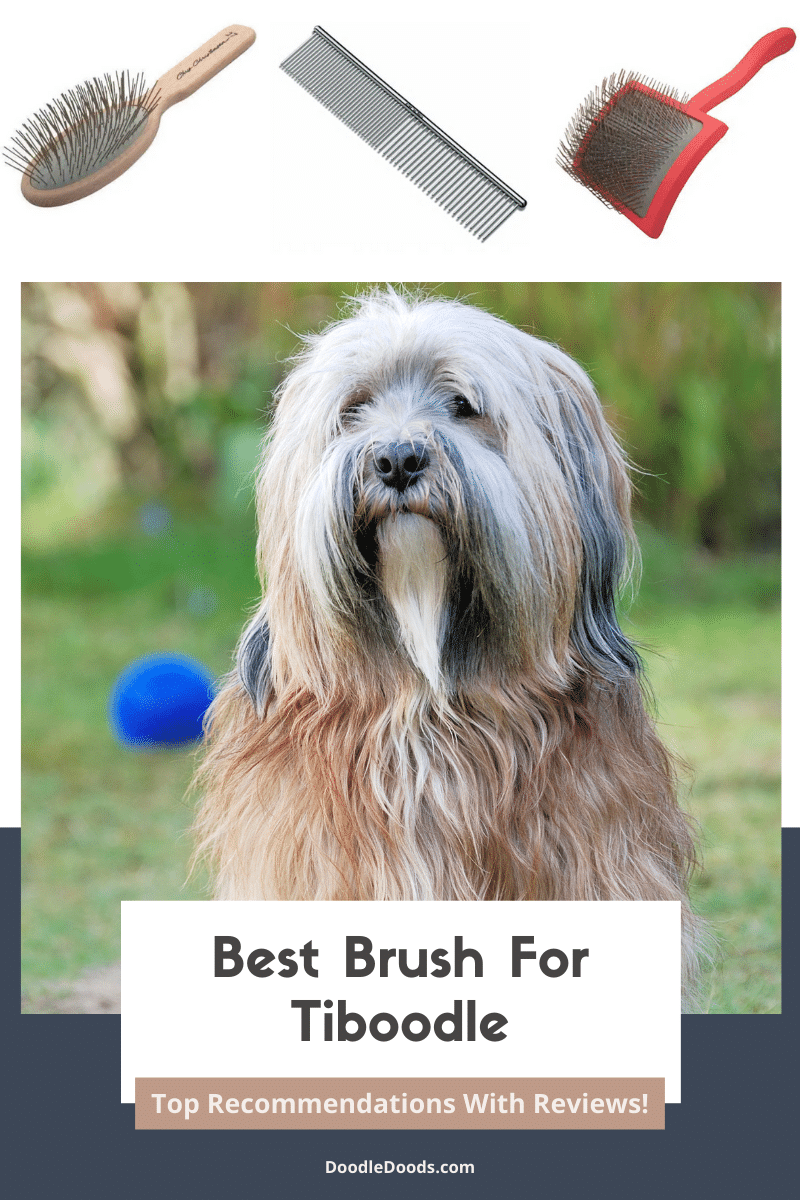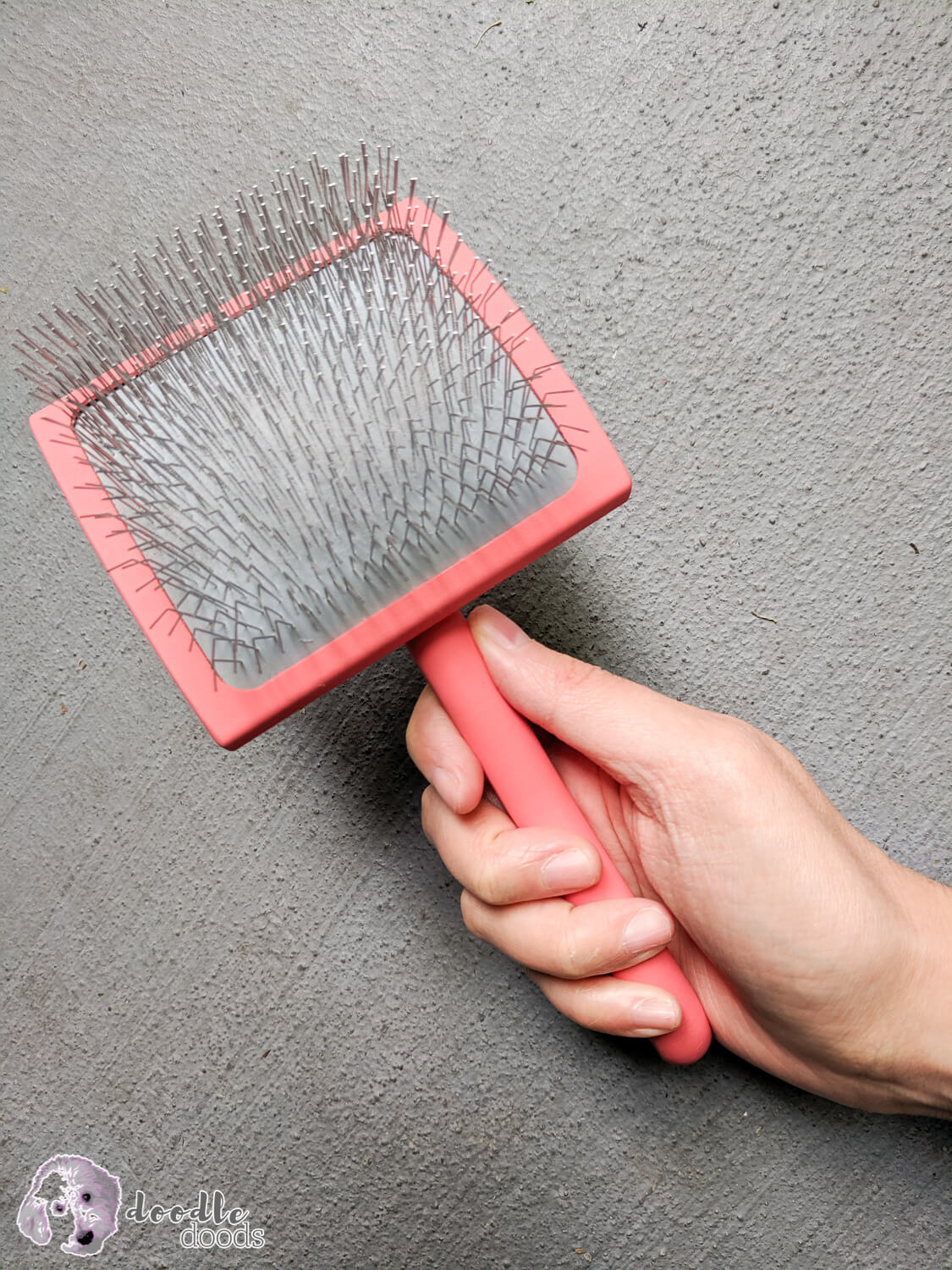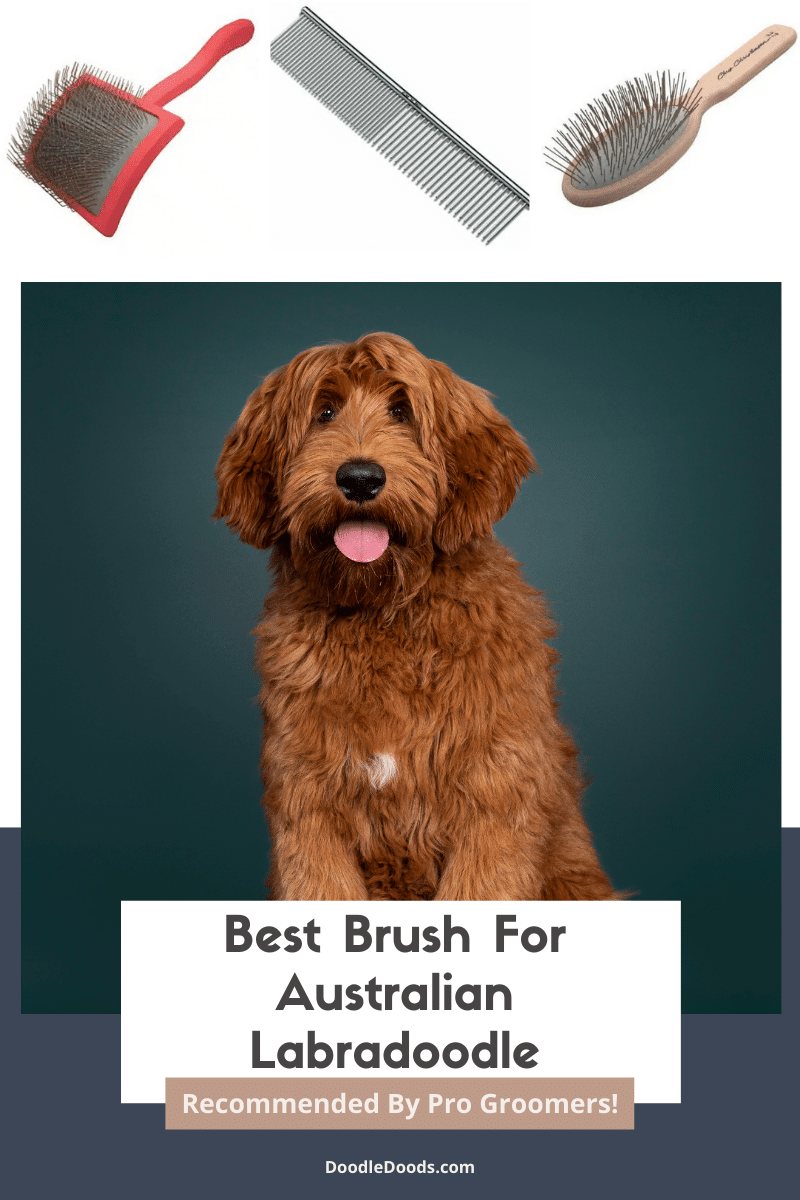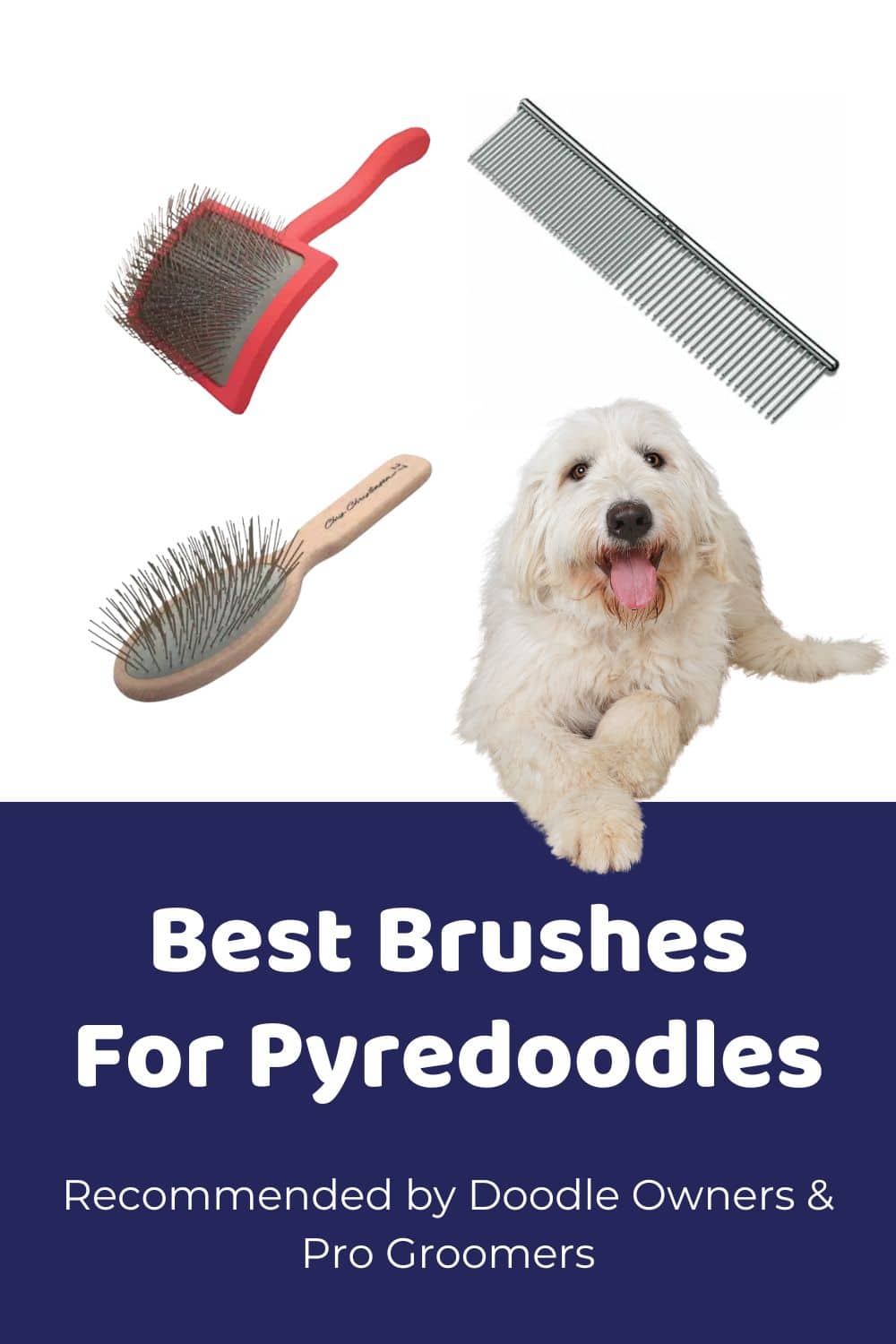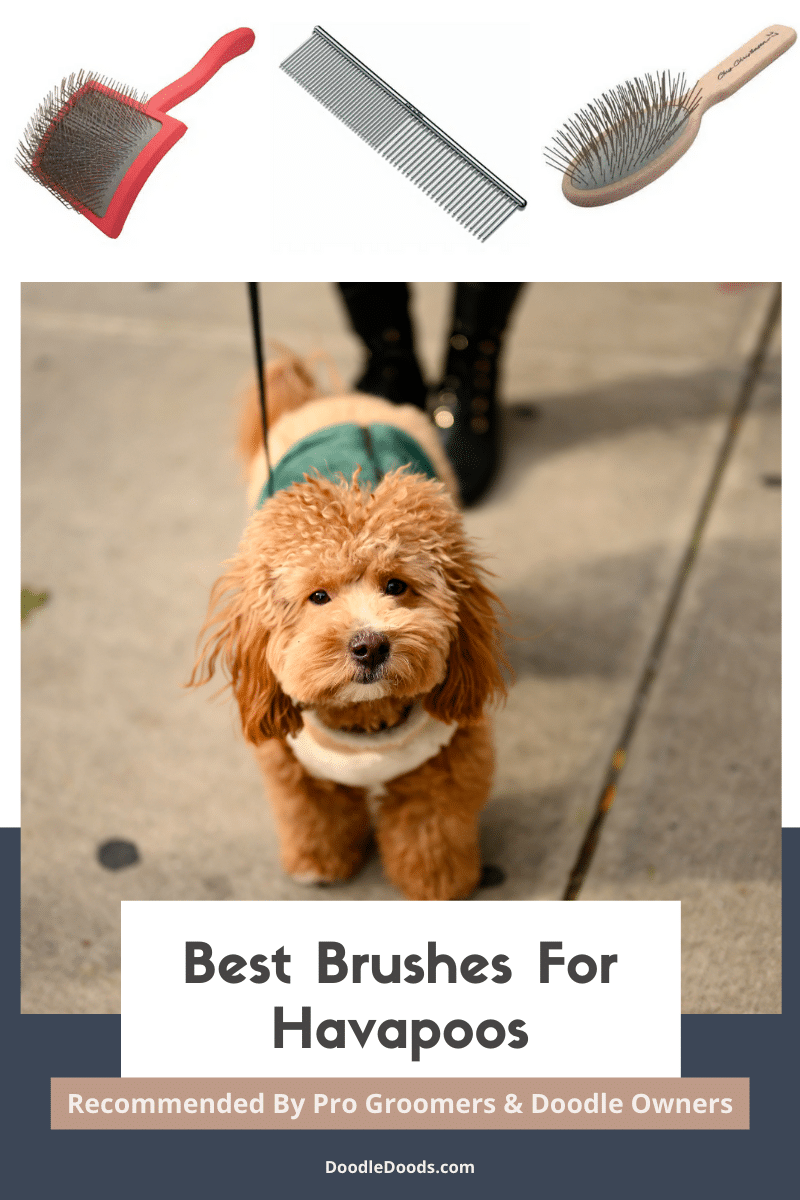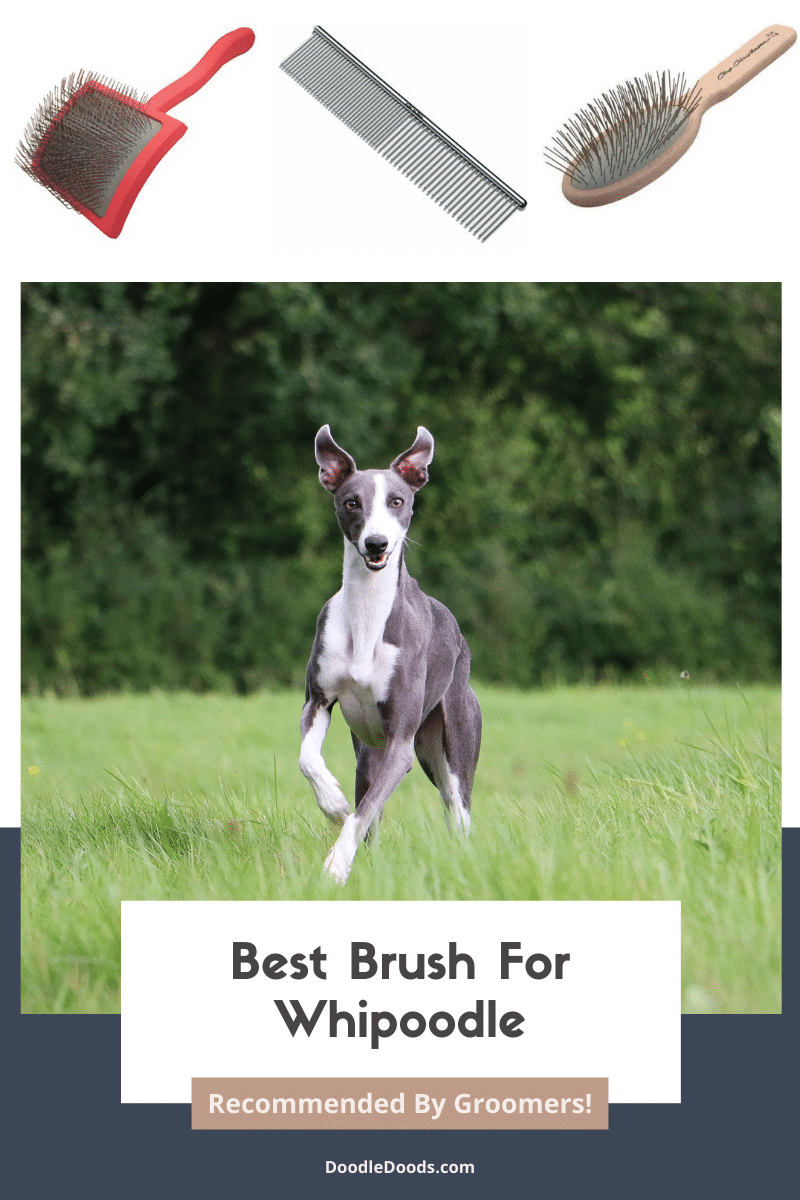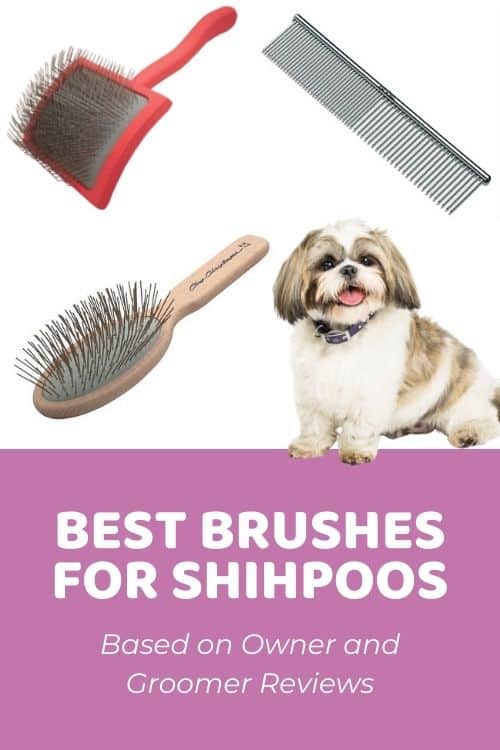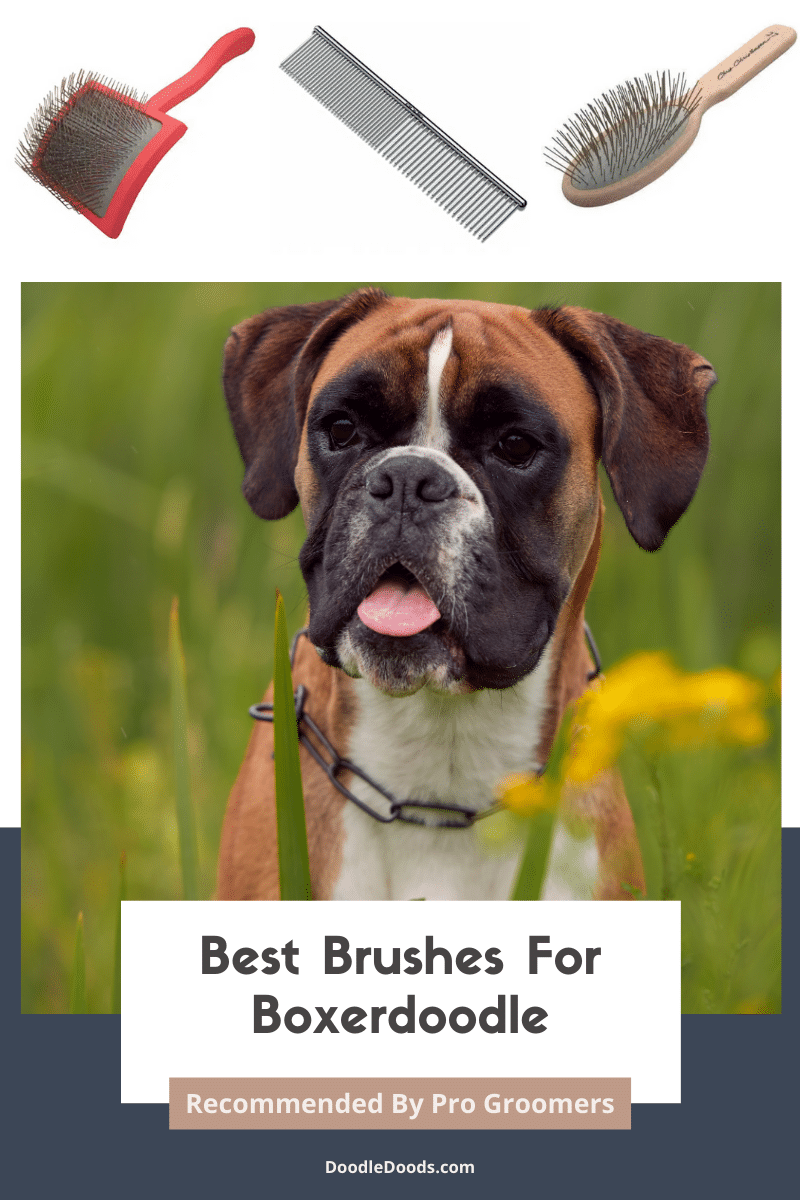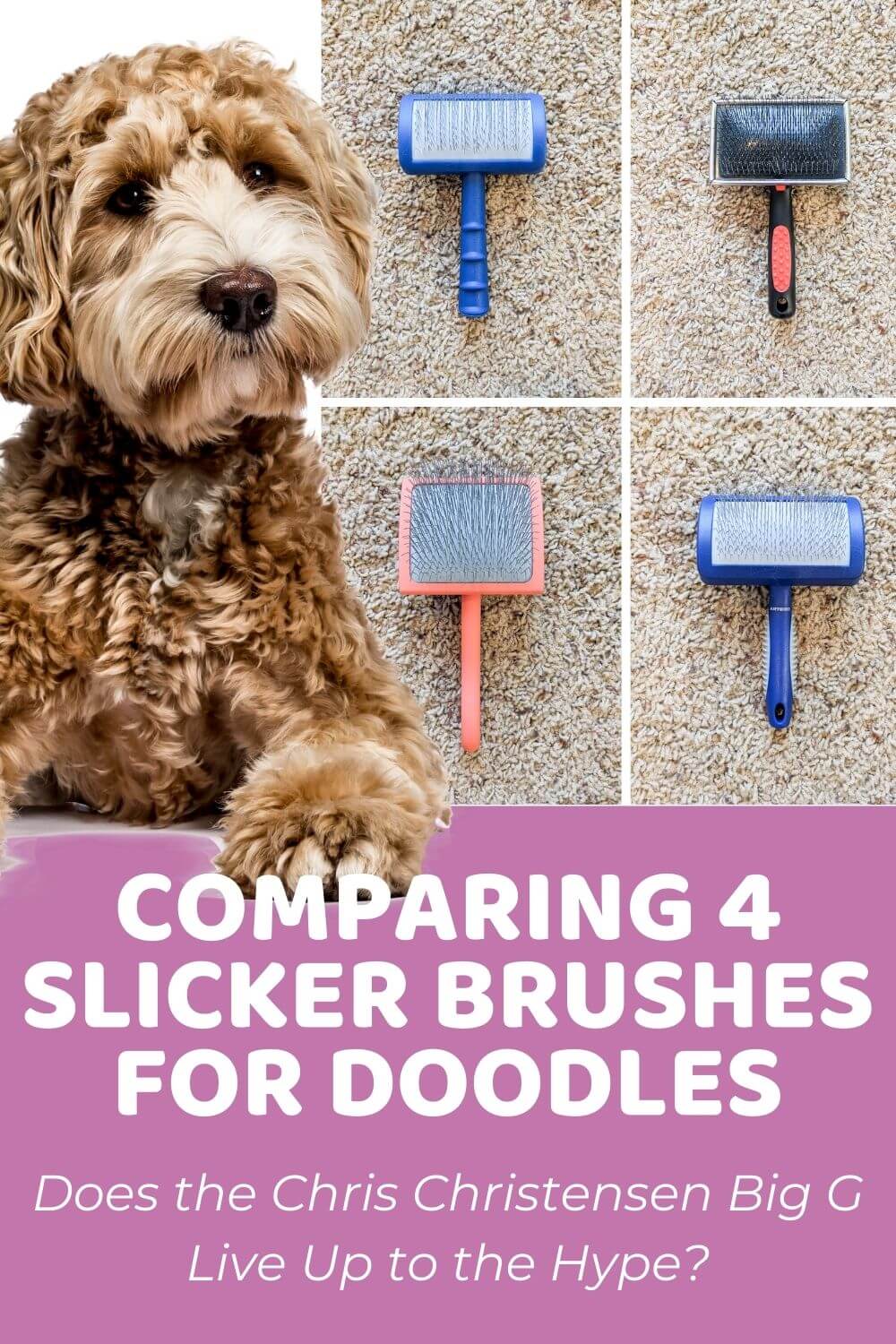If you’ve got a lil’ Tiboodle pup, you probably know how much upkeep they need. Or perhaps not. Whatever the case, we’ll help you ensure that your pooch has the most gorgeous looking locks on the block. In this guide, we’ll help you choose the best brush for your Tiboodle according to their coat type and unique Doodle-y characteristics. After all, Poodle mixes aren’t for the lazy and faint-hearted. They do require some upkeep and work so that your doggo always gets to flaunt its beautiful, fluffy coat. Without further ado, let’s get started…
Table of Contents
- Choosing The Best Brush For Tiboodle: Types Of Popular Tiboodle Brushes
- What Is The Best Brush For Tiboodle?
- Best Brush For Tiboodles: Reviews With Pros & Cons
- Best Brush For Tiboodle: Honorable Mentions
- How Choosing The Correct Brush For Your Tiboodle Can Help Prevent Matting?
- How Often Do You Have To Brush A Tiboodle?
- How To Brush A Tiboodle Properly?
- Best Brush For Tiboodle: FAQs
Choosing The Best Brush For Tiboodle: Types Of Popular Tiboodle Brushes
The Tiboodle is a hybrid cross consisting of the Tibetan Spaniel and Poodle breeds. While not as well-known as many other more established Poodle mixes, Tiboodles are every bit as adorable, loving, and playful pups as their other Doodle cousins. And let’s not forget, adding the Poodle genes into the mix makes the Tiboodle a rather low-shedding and allergy-friendly companion. Some might even say hypoallergenic, but we digress (for now…).
If you’re familiar with Doodle breeds, you might have heard that they’re not the easiest dogs to take care of. Indeed, they’re intelligent and easy-going dogs, but they are high-maintenance when it comes to their coat care and grooming. Regardless of which Poodle mix you have or plan to adopt, there’s no way around it – you’ve got to plan your time to ensure that you fit in all of your pup’s grooming activities.
Regular haircuts, brushing, bathing, nail trimming, and ear cleaning are just a few steps in a Tiboodle’s ideal grooming routine. But the most important thing you have to do for your Tiboodle’s health, wellbeing, and to maintain its beautiful looks is to regularly brush them.
But with all the numerous, even countless dog grooming brushes available online and in pet stores, you’re probably wondering – how to choose the best brush for a Tiboodle? There are two types of dog grooming brushes that can work wonders on these dogs. Let’s take a closer look.
Slicker Brush
By far the best brush for a Tiboodle is a good quality slicker brush. You’ve probably seen various slicker brushes already. They usually have a rectangular or square paddle and an ergonomic handle, designed to get the job done fast and effectively. As slicker brushes are often considered to be the most effective on very thick and textured coats, they also work great on all types of Tiboodle coats.

You can use a slicker brush to detangle the coat from knots and tangles, but also to de-shed the coat from any loose dog hair that may get stuck in the very deep layers of the fur. There’s also a reason for the not-so-usual handle placement of a slicker brush – it’s designed to take the excess strain off your hand and arm, making those grooming sessions much less tedious for both you and your likely impatient pooch.
However, not all slicker brushes are the same. They vary in size and construction, so be sure to pay attention to what you’re actually buying. For example, considering that Tiboodles are rather small dogs, it probably makes more sense to get a small to medium-sized brush for your pup. A large, bulky brush isn’t as easy to maneuver around a small body and therefore will also be less effective.
Pin Brush
Then there are pin brushes that can also be used to detangle and deshed certain types of Tiboodle coats. But we must stress that pin brushes are generally less effective than slicker brushes. Don’t worry, we’ll cover the different types of Tiboodle coats in a moment so you can make the right choice for your pup.
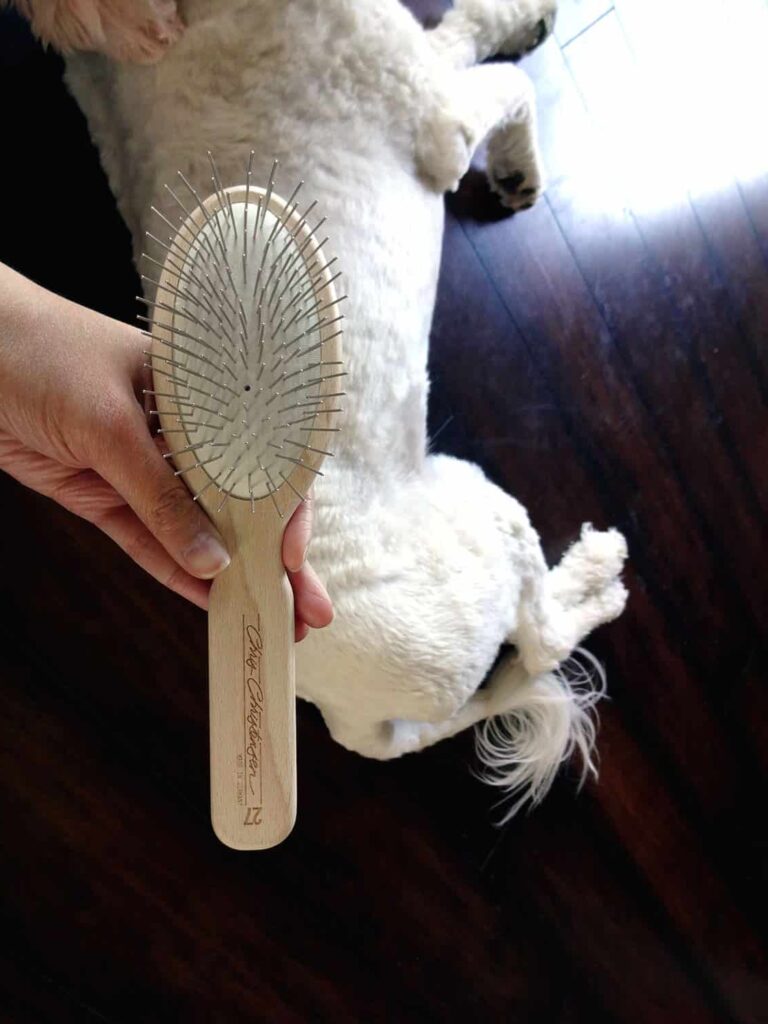
A pin brush isn’t much different from those usual human hair brushes that we’ve used. A pin brush usually has an oval-shaped paddle with an already familiar handle placement. When shopping for a pin brush, we recommend looking for one that’s made with stainless steel pins. There are also varieties made with wooden or plastic pins, but you should definitely steer clear of those – they’re not as effective and they tend to get stuck in Tiboodles’ coats. Bristle brushes also look similar, but these are not great for Poodle mixes due to the thick coats these pooches have.
Metal Or Stainless Steel Comb
In addition to buying a dog grooming brush for your Tiboodle, you should also get yourself (ahem… your pup) a good metal or stainless steel comb. This is an absolute necessity in any Tiboodle’s grooming kit, regardless of your dog’s coat type, hair length, size, whatever it may be!
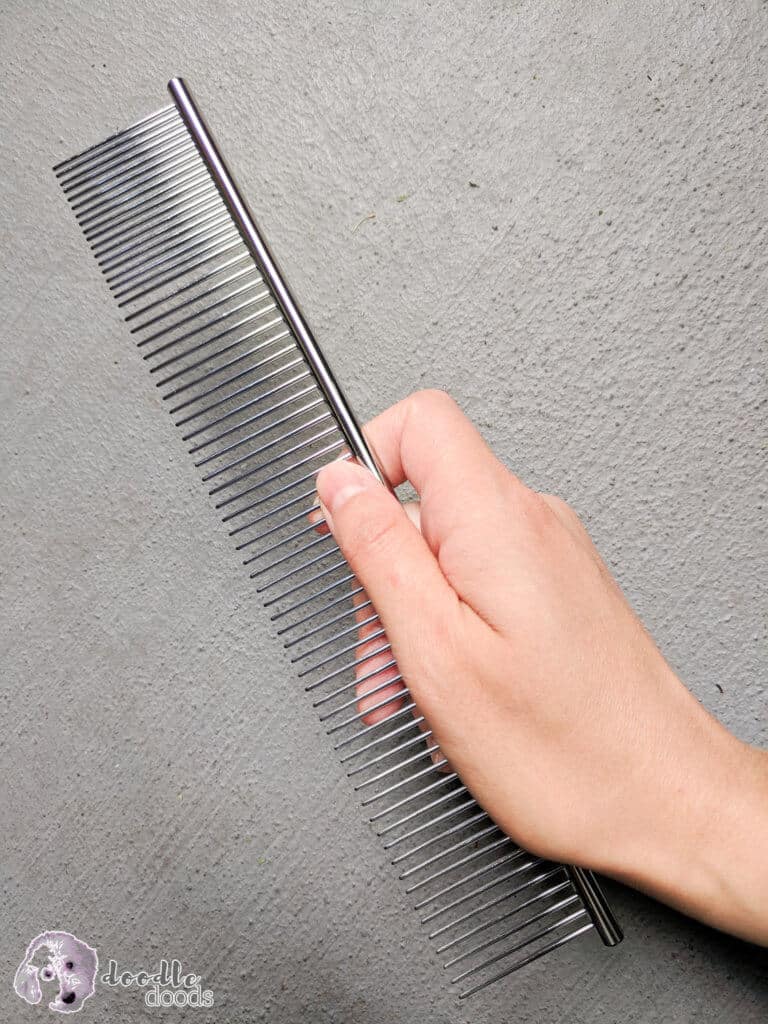
A metal comb lets you effectively get rid of any and all knots, mats, and tangles even from the deepest layers of the fur, where a brush might not reach as easily. But to be fair, you can even use it for deshedding the coat from loose hair as well as removing that daily dirt and grime from your pup’s coat. It’s also excellent for grooming those small, hard-to-reach areas like the fur around the face or paws.
All of us probably have a comb or two lying around in a drawer somewhere. But we strongly recommend you get your Tiboodle a comb that’s made from an extremely durable material like stainless steel or metal. Tiboodles’ coats are thick and textured, which means that plastic and wooden combs will get stuck and easily snap when working on those stubborn knots and mats.
What Is The Best Brush For Tiboodle?
Now that you know which dog grooming tools to look for, it’s time we help you choose the best brush for your Tiboodle. The main things you should consider include: your dog’s coat type, their hair length, and the size of your pup (which we already covered earlier on). But it’s just as important to look at the overall construction and quality of the brush. Flimsy, uncomfortable brushes obviously aren’t the best pick, even if they’re much cheaper than other options out there. No one wants to buy a new brush every few months! And, it would make sense to get a brush that’s actually easy for you to use.
Firstly, if your Tiboodle usually has a longer, shaggier hairdo, then it’s absolutely imperative that you get your dog a brush with pins long enough to penetrate all layers of the fur. The longer your dog’s hair, the more it tends to tangle and mat. In those cases, short pins usually won’t do, as the worst mats form close to the skin, at the root of the hair. But if most of the time your pooch doesn’t have long hair, you can just as well opt for smaller pins.
Secondly, you should also understand your Tiboodle’s coat type and how it’ll affect their everyday grooming requirements. Which brings us to…
Best Brush For Tiboodles According To Their Coat Type
The coat of a purebred Poodle needs no introduction. Poodles have very thick and textured curls that are noticeable from a mile away. But with the Tiboodle crossbreed, we’ve also got to take into account the other purebred parent – the Tibetan Spaniel with its long, silky, and straight hair.
But what happens when we combine those two drastically different genes? Obviously, there’s never a guarantee how a Tiboodle pup may turn out. Some pups get those Poodle-like curly coats, whereas others inherit the Tibetan Spaniel’s straight hair. But most of the time, they fall somewhere in between with their wavy hair.
Curly Coat
Like the Poodle’s curly coat, Tiboodles with this hair type have thick, dense, super curly coats that require a fair bit of upkeep. Due to all those many layers of textured curls, dirt, debris, and loose dog hair gets easily stuck inside the fur. As you can imagine, those uncomfortable knots and tangles are quick to follow. The best brush for a Tiboodle with a curly coat is something more heavy-duty, such as a slicker brush.

But the great thing about curly-coated Tiboodles is that while they’re the most high-maintenance, they’re also the most hypoallergenic of them all. Curly-coated Doods don’t have a shedding undercoat and any hair that does fall out usually gets trapped inside the fur anyway.
Straight Coat
Straight-coated Tiboodles mostly inherit their coat genetics from the Tibetan Spaniel. Their hair is more smooth and silky, doesn’t have a curl or wave to it, and it’s generally easier to maintain tangle-free than the curly coat. The only downside is that these dogs tend to also inherit the Tibetan Spaniel’s double coat. The double coat consists of two layers of fur – the outer layer and the undercoat. The undercoat is what usually causes most of the shedding and is to blame for allergic reactions in humans.

Fortunately, even straight-haired Tiboodles benefit from the Poodle genes in their genetic makeup, making them shed a bit less than their purebred Tibetan Spaniel parents. You can also greatly minimize shedding by regularly brushing your dog and keeping up with their grooming routine. You can opt for either a pin or slicker brush, alongside a sturdy stainless steel comb.
Wavy Coat
The wavy coat type is likely the most common out of the three. The fur is typically quite easy to manage, as it doesn’t tangle as easily as the curly coat nor does it shed as profusely as the straight coat. And if you’ve got a wavy-coated Tiboodle that doesn’t inherit the Tibetan Spaniel’s double coat, you’re in for a real treat!
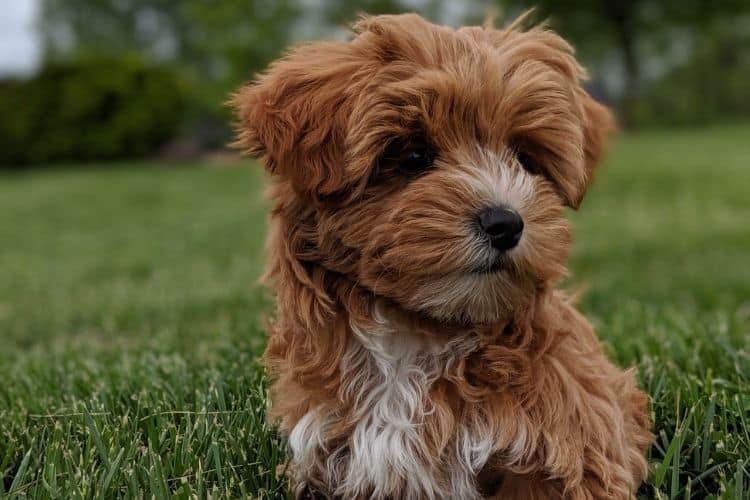
Still, wavy-coated Tiboodles also need to be brushed, trimmed, and bathed to prevent matting and excessive shedding. The best brush for a Tiboodle with a wavy coat is either a slicker or pin brush. If your pooch is particularly mat-prone, a slicker brush would be a better choice, though.
Best Brush For Tiboodles: Reviews With Pros & Cons
Chris Christensen Big G Slicker Brush
The best brush for your Tiboodle is… *drumroll please*… the Chris Christensen Big G Slicker Brush, also known as the “coral brush”. It has extra long pins that can work through even the thickest and most curliest of Doodle coats. Not only will this effectively detangle the fur, it’s great for removing loose undercoat, dirt, and debris from the coat. And as the pins on this brush are actually bended, they’ll also fluff up your dog’s coat in the process.
The Big G is also super comfortable to use thanks to its extra long non-slip handle. Your arm won’t get as tired and it won’t slip out of your hands, either. But we must say, there isn’t even time for your arms to get tired, the Big G gets the job done FAST. It’s simply that good!
Pros
- Designed for detangling and deshedding very dense and textured coats;
- Bended pins lift up the hair, making it more fluffy;
- Extra long ergonomic handle that provides a good grip;
- Features a wide paddle with long, bended pins for fast results;
- Available in three sizes: large, medium, and Baby G.
Cons
- It’s quite an expensive dog grooming brush, especially when compared to other brushes available.
The verdict: The Chris Christensen Big G Slicker Brush is the best brush for Tiboodles of all coat types. For small dogs like the Tibetan Spaniel-Poodle mix, the medium and Baby G sizes are best suited.
Chris Christensen Original Series Oval Pin Brush
For wavy and straight-haired Tiboodles, a good alternative to the Big G is the Chris Christensen Original Series Oval Pin Brush. At a more affordable price point, you’ll get just as high-quality grooming brush. It features long stainless steel pins with polished tips that easily glide through your Tiboodle’s coat. The handle is made from lightweight, yet sturdy and durable beechwood that’s comfortable to grasp and won’t slip.
But keep in mind that as pin brushes aren’t as effective as slicker brushes, this one is best suited for prevention, rather than getting rid of already formed knots and mats. Also, pay attention to the size of the brush you’re purchasing. Each size has different sized pins, so you should choose the brush size according to your Tiboodle’s hair length. If your dog usually has very long hair, then opt for the largest brush.
Pros
- Extremely smooth stainless steel pins that are gentle on your dog’s skin;
- Smooth wooden handle that’s easy to grasp;
- Great quality brush at a good price point;
- Available in three sizes and pin lengths: 20mm, 27mm, and 35mm.
Cons
- Not as effective for detangling knots and mats as the Big G.
The verdict: The Chris Christensen Pin Brush is the best brush for Tiboodles with wavy and straight coats.
Andis Steel Greyhound Comb
While the Big G may be a bit on the pricier side and the CC pin brush not as effective on very tangle-prone coats, there’s one tool that all Tiboodles will benefit from – the Andis Steel Greyhound Comb. The whole comb is made from high-quality, pretty much unbreakable stainless steel and it’s super affordable, too! It features two sides that you can easily switch between, so essentially you have two combs for the price of one. Whether you need to get rid of knots and mats, or detangle and deshed those smaller areas, this comb will be your literal lifesaver.
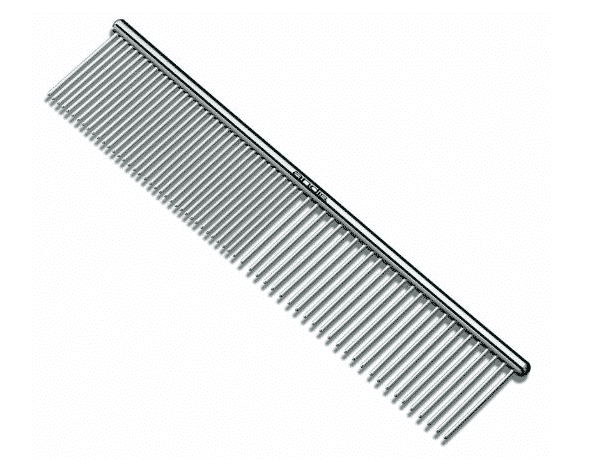
Pros
- The only tool you’ll ever need for detangling knots and mats;
- Features two sides: one with narrow set teeth and the other with coarse teeth;
- Excellent for grooming smaller areas;
- Made from quality steel and doesn’t cost much.
Cons
- None!
Best Brush For Tiboodle: Honorable Mentions
We’re all for buying quality tools that’ll last you a long time, but there’s no denying that the Big G we reviewed above isn’t the cheapest one out there. If you’re looking for some great alternatives at a more affordable price point, then check out these brushes and combs we’ve hand picked for your Dood:
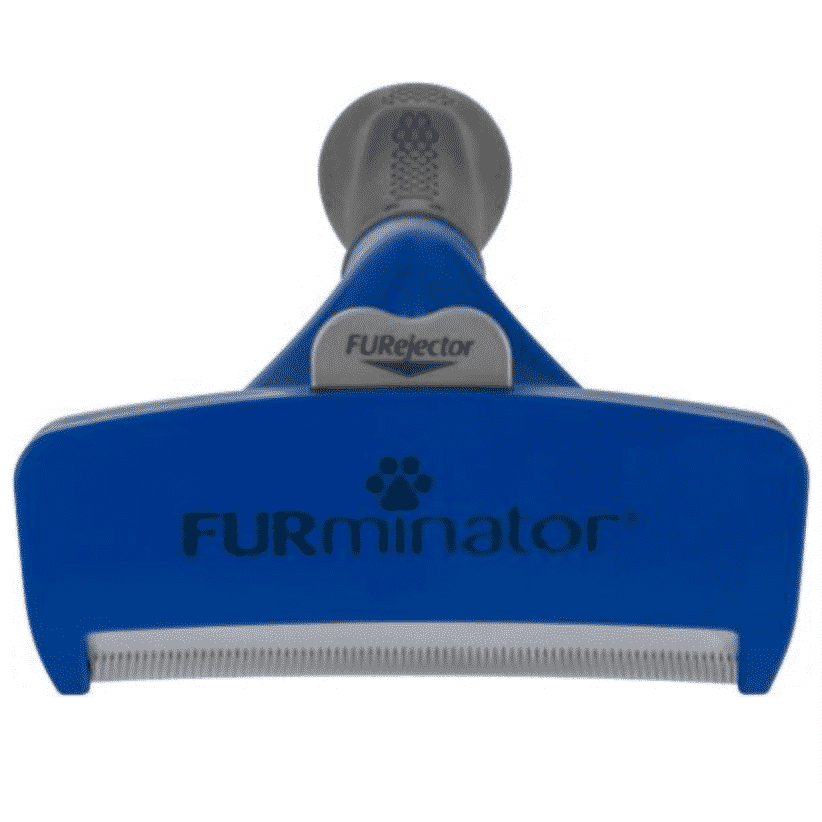
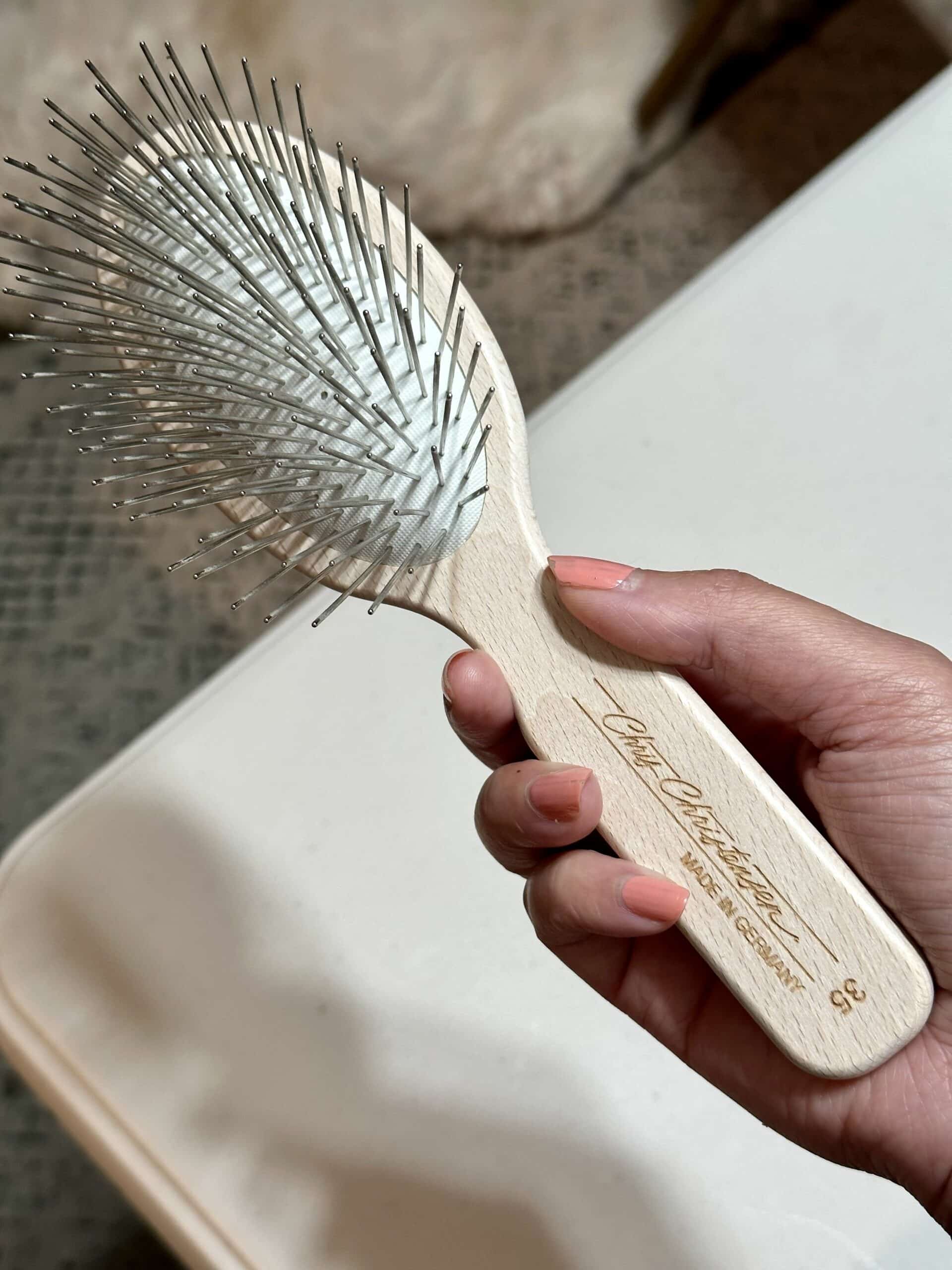
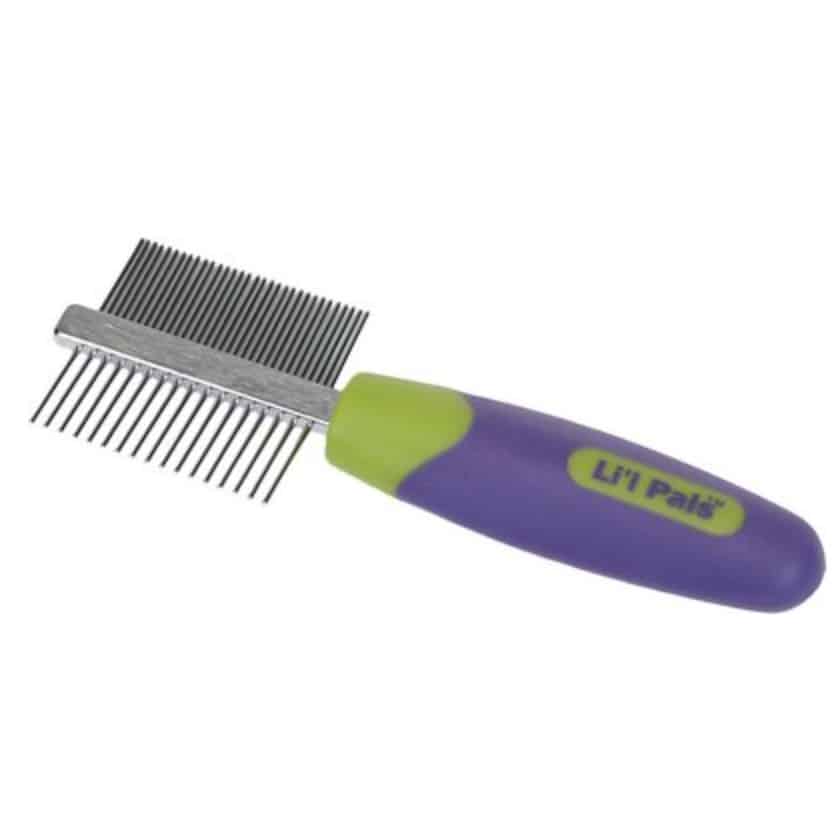
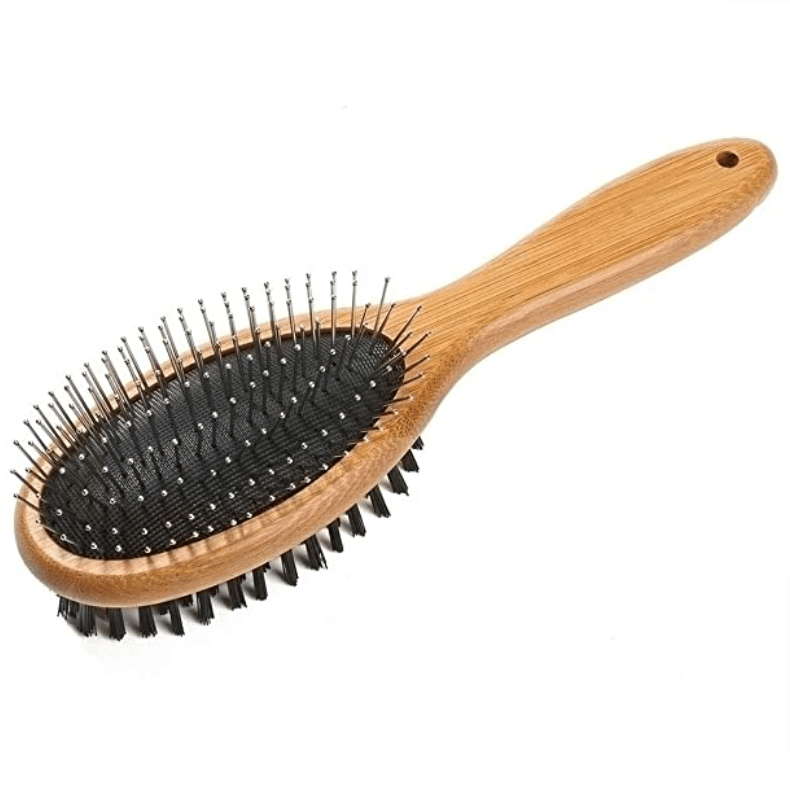
How Choosing The Correct Brush For Your Tiboodle Can Help Prevent Matting?
Like other Poodle mixes, Tiboodles can very easily get matted. But you can tackle this common problem by regularly brushing your pooch with the right kind of brush. Not only will regular brushing prevent matting, it’s also going to reduce shedding and therefore your dog’s hair won’t trigger allergies as much, either.
The best brush for Tiboodles, regardless of their coat type, is a quality slicker brush. Slicker brushes work great on all coat types and they can handle even the most tangle-prone coats. If your pup isn’t necessarily super mat-prone and you don’t like the handle placement of a slicker brush, you can opt for a pin brush instead. A pin brush is best used on wavy and straight-haired Tiboodles that naturally are slightly less prone to matting.
But as we mentioned earlier, it’s just as important to ensure that you’re choosing a pin or slicker brush with appropriately-sized pins. Remember, the longer your Tiboodle’s hair, the longer pins you should opt for. We also strongly recommend brushes that have stainless steel pins. They’re more effective, glide through the fur more easily, and won’t snap like plastic or wooden pins.
What’s more, don’t underestimate the importance of the overall quality of the brush. Indeed, you may find some great alternatives at just a faction of the price. But if they’re not made from quality materials or are uncomfortable for you to use, it’s simply a waste of money. We can definitely attest to the ease of use and the quality of the brushes we reviewed earlier in this guide.
How Often Do You Have To Brush A Tiboodle?
You should brush your Tiboodle daily to effectively prevent matting. Yes, you read it right, every single day. Although wavy and straight-coated Tiboodles aren’t as high-maintenance as curly-haired Doods, their coats can still get matted if not properly groomed on a regular basis. So, to prevent those painful mats from forming in the first place, it’s best if you take that little bit of time every day to brush your doggo. At the very minimum, wavy and straight-haired Tiboodles can be brushed 3-4 times a week.
Another thing worth mentioning is that long hair gets more tangled than short hair. We all know how beautiful those long-haired, shaggy Doodles look, but they also require more upkeep than short-haired dogs. If you’re not really up for that much grooming, maybe consider trimming your Tiboodle’s hair shorter.
But we must say that there are many other benefits of those daily brushing sessions. It also helps promote circulation, distribute natural skin oils, and as a result boost healthy hair growth. You also won’t have to deal with excessive shedding and even get to bathe your dog less frequently!
And to be fair, the more often you brush your dog, the less tangles and knots they’ll get. Therefore, you won’t have to brush your dog for as long nor do you have to deal with those painful mats that are almost impossible to get out of the fur.
But humans as we are, sometimes it’s simply not feasible to brush your dog every single day. If you’ve missed a couple, or more, grooming sessions, then you might not have to shave the whole coat off just yet. Instead, try the line brushing method and see how it can transform your Dood’s coat from matted and dull to fluffy and fabulous.
Can You Over-Brush A Tiboodle?
Now you might be thinking – is it possible to brush your Tiboodle too much? That’s not really the case. For example, if your pup loves to go a bit crazy outdoors, it might be easier to brush the dirt and debris out of their coat immediately after you get back home. This way, you’ll immediately get the tangles out and it’ll also stay much cleaner.
But nonetheless, make sure that you’re using the right kind of grooming tools and the correct technique when brushing your dog. The main thing is that you’re not pulling the hair too tightly, not yanking the mats, and not applying too much pressure onto the skin with the brush. If you’re unsure how hard to go, first try the brush on your arm to grasp how much pressure you can apply so as to not scrape your dog’s skin with the pins.
How To Brush A Tiboodle Properly?
The main goal of brushing your Tiboodle is to prevent matting as well as reduce shedding. In fact, there are certain techniques you should implement to achieve the best results. Below you’ll find our step-by-step guide on how to properly brush your Tiboodle. So gather your grooming tools, a dog detangler spray, follow along, and get grooming!
Step #1
First things first, you’ll want to locate any knots and mats that require a bit more work. Run your hands through all areas of your Tiboodle’s coat, paying extra attention to the most mat-prone areas behind the collar and harness, ears, tail, and bum. Once you’ve found a mat, you want to detangle it with your metal comb. We recommend spraying on dog detangling spray before you start working on them. This loosens up the knot and makes it easier to detangle.
When working on those knots and mats, you should always start detangling from the tip of the hair, moving slowly up towards the root as you detangle the knot. Doing this the other way around often makes the mats even more matted!
A word of caution – some mats can be quite painful to detangle. A helpful trick is to hold the knot very close to the root of the hair with your one hand whilst detangling it with your comb in the right hand. This should take much of that pressure off the root of the hair, making it less painful for your dog.
Step #2
After you’ve detangled the worst mats, you can finally reach for your slicker or pin brush. Before you start brushing, you can spray some dog detangling spray all over the coat to make it softer and easier to manage. But be careful around your dog’s eyes, nose, and mouth!
When brushing your Tiboodle, start from the areas that are the closest to the ground. It should go like this: paws and feet, then the legs, chest, neck, belly, and bum. Once these areas have been groomed, you can start brushing the sides and tail. And finally, brush the hair on the back. Again, the order of areas that you prioritize will make the grooming sessions go by faster. Similarly as with detangling mats with a comb from the tip of the hair, a.k.a starting from the lowest point and then moving your way up.
If you find it difficult to use a dog grooming brush around your Tiboodle’s face, you can also groom the area with a comb instead. The same goes for any other delicate and tricky areas that aren’t as easily reachable.
Here’s an illustration showing you exactly which areas to prioritize first:
Step #3
To make your Tiboodle pup extra fluffy, simply use your brush or comb in upwards strokes and gently tease the hair. Don’t get too messy with it, though, as the hair can get tangled again.
Best Brush For Tiboodle: FAQs
The best brush for a Tiboodle is the Chris Christensen Big G Slicker Brush. You can also opt for any other high-quality slicker brush, as long as it’s made with stainless steel pins and gets the job done. For wavy and straight-coated Tiboodles, a good alternative is the Chris Christensen Original Series Oval Pin brush. It’s also much more affordable than the Big G and many even prefer the more familiar handle placement. But whichever brush you choose amongst all the different options, don’t forget to also purchase a stainless steel or metal comb for getting rid of those pesky knots and mats. The Andis Steel Greyhound Comb is our favorite for Doodle breeds, but you can opt for similar alternatives as well.
The secret to that fluffy and shaggy Doodle coat is very simple – regular grooming. Make sure to brush your Tiboodle daily, have their hair trimmed around every 6 to 8 weeks, and bathe them when they get dirty or smelly. If you’d like to add some additional steps into your Dood’s grooming routine, you can blow dry their hair after bathing. This will certainly make the coat extra voluminous. Another thing you can do is to gently tease the hair after brushing to bring the volume back into the hair.
The great thing is that puppies don’t need to be groomed as much as adult Tiboodles. But it’s best if you start brushing your puppy early on so that they can get used to grooming from a young age. During those puppyhood months, you might prefer using an even smaller dog grooming brush or a special puppy brush that’s easier to maneuver around your pup’s tiny body. The main thing is that you’re being extremely gentle – puppies’ skin is very delicate and you don’t want to irritate or injure the skin.
Want to Learn
DIY Doodle Grooming?
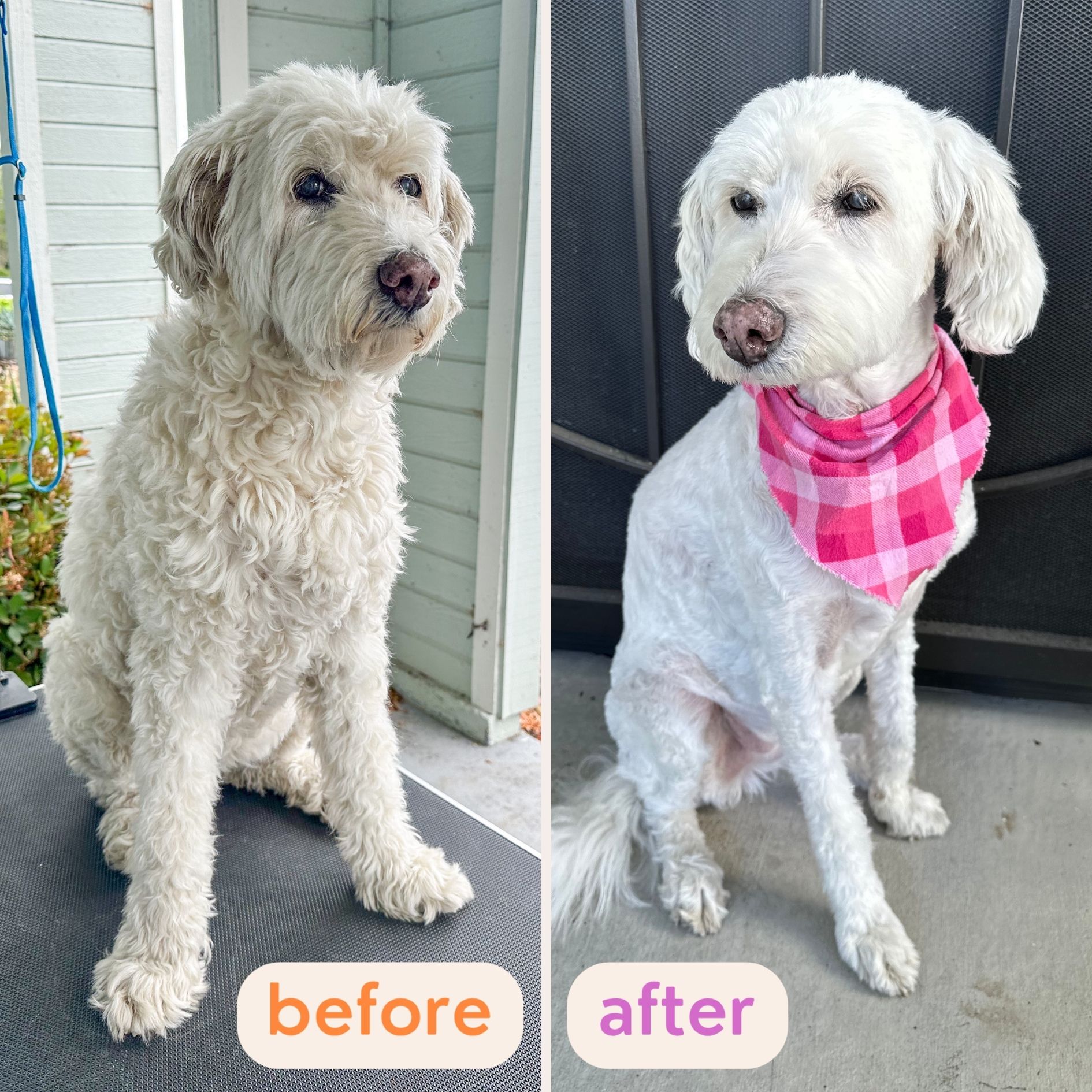
 “Every concern and question I had now has clear, practical solutions.” – Paula D.
“Every concern and question I had now has clear, practical solutions.” – Paula D.
 “These lessons have provided tremendous amounts of information.” – Steve B.
“These lessons have provided tremendous amounts of information.” – Steve B.
 “Buy the course and complain about how easy it is!” – Chris S.
“Buy the course and complain about how easy it is!” – Chris S.
Learn How To Groom Your Doodle At Home…
Safely…And Without Confusion:

